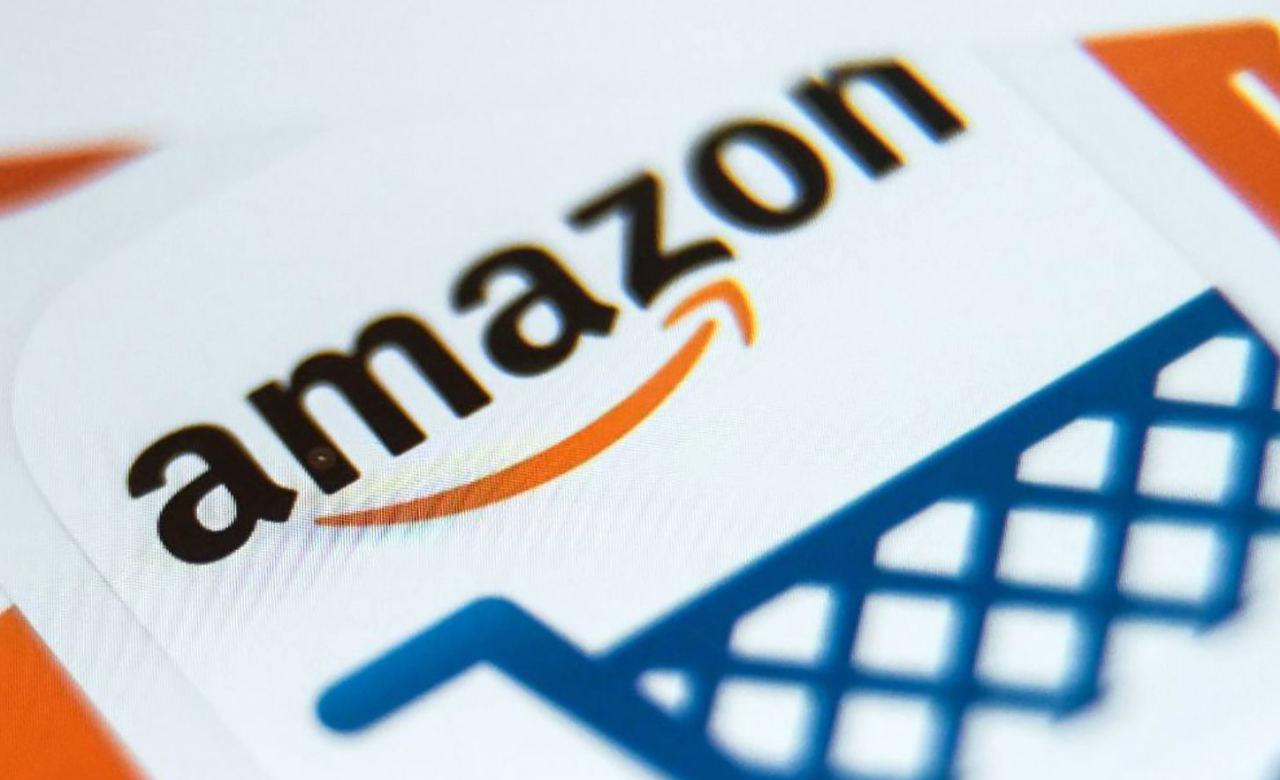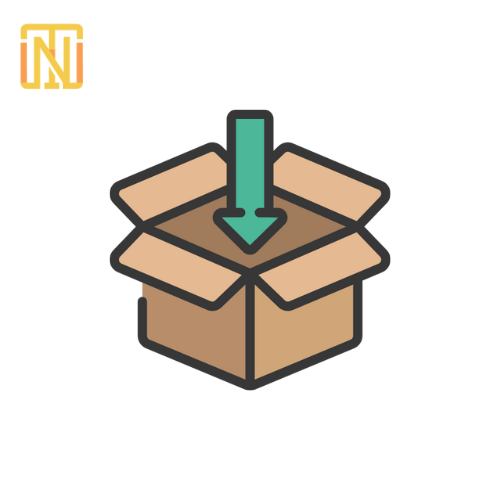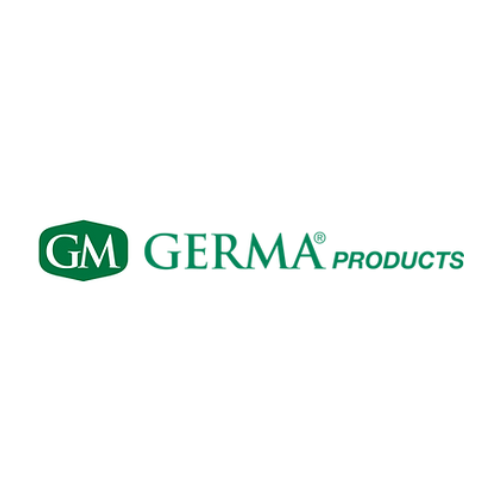
Mastering Amazon FBA: A Comprehensive Guide to Success
Amazon FBA: Revolutionizing
Online Retail
In the dynamic world of e-commerce,
Amazon's Fulfillment by Amazon (FBA) program stands as a transformative
solution, redefining how businesses approach online selling. But, what is Amazon FBA? Simply put, it's a
service where Amazon stores, packs, and ships products on behalf of sellers,
also handling returns and customer service. This comprehensive approach not
only streamlines the selling process but also opens doors to Amazon's vast
customer base.
So, how does Amazon FBA work? When a business enrolls in the FBA program, its
products are stored in Amazon's fulfillment centers. Once an order is placed,
Amazon takes care of the packaging and shipping. This method is highly
efficient, allowing businesses to focus on product sourcing and growth, rather
than logistics.
But is Amazon FBA worth it? For many sellers, the answer is a resounding yes. FBA
offers numerous benefits, such as access to Prime customers, increased
visibility on Amazon's platform, and the convenience of outsourced shipping and
handling. It's a powerful model for both established brands, and emerging names
in various industries. Whether selling health supplements or skincare products,
FBA provides a level playing field, where small businesses can compete with
larger retailers, leveraging Amazon's world-class logistics and customer
service.
As we delve deeper into Amazon FBA's
workings, benefits, and strategies for success, it becomes clear that this
service is more than just a logistics solution - it's a gateway to global
markets and unprecedented growth opportunities for sellers of all sizes.
Understanding Amazon FBA
The Fulfillment by Amazon (FBA) program is a cornerstone of
success for many sellers on Amazon's vast e-commerce platform. But how Amazon FBA works can seem complex
at first glance. Essentially, FBA allows sellers to leverage Amazon's extensive
logistics network. Sellers send their products to Amazon's fulfillment centers,
where they are stored until an order is placed. Amazon then handles the
picking, packing, and shipping of these products to the customer, offering fast
and reliable delivery.
Understanding what is FBA Amazon involves recognizing its significance in the
e-commerce ecosystem. It's more than just a shipping method; it's a
comprehensive solution that includes customer service and returns handling. This
service empowers individual sellers, including those offering products in
health and beauty segments, to concentrate on product development and marketing
without worrying about logistical complexities.
How to Amazon FBA effectively is crucial for sellers. It
involves strategic planning in product selection, inventory management, and
pricing. By optimizing these aspects, individual sellers can significantly
expand their reach and profitability on Amazon, similar to the success stories
of established brands. For instance, a health supplement brand can ensure
better visibility and customer trust by using FBA, benefiting from Amazon’s
established reputation for fast and reliable service.
Starting with Amazon FBA
Embarking on an Amazon FBA venture is an
exciting prospect for any seller. Whether you're a new seller starting with few
products or an established seller, understanding how to start an Amazon FBA
business is crucial. The process is straightforward but requires attention to
detail.
1. Setting Up an Amazon Seller Account
The first step in how to start Amazon FBA is to set up an Amazon Seller account.
Choose between an individual or professional account, depending on your
expected sales volume and the variety of products you plan to offer. For
instance, a brand, known for its variety of teas, would benefit from a
professional account due to its broad product range.
2. Product Selection and Sourcing
Next, decide what to sell. This step is
pivotal to your FBA success. Consider products with a steady demand, such as
those in the health supplement or skincare categories. Then after deciding a
product, look for its sourcing. You can look at multiple sourcing options
including UTN Wholesale. Researching the market and understanding consumer
needs can help you make informed decisions.
3. Creating Product Listings
Once your products are chosen, create
detailed and compelling product listings. This includes high-quality images,
detailed descriptions, and competitive pricing. For example, sellers of beauty
products should highlight unique benefits and ingredients in their listings,
taking cues from successful sellers/brands.
4. Preparing and Shipping Products to Amazon
Prepare your products for FBA by adhering
to Amazon's packaging and labeling requirements. Sellers with multiple SKUs need
to be meticulous in this process to avoid mix-ups. Once ready, ship your
inventory to Amazon’s fulfillment centers.
5. Managing Inventory and Monitoring Performance
Regularly manage your inventory to avoid
stockouts or overstocking. Utilize Amazon's tools to monitor sales performance,
optimize listings, and adjust pricing strategies as needed.
6. Marketing and Promotion
Finally, invest in marketing and
promotion. Utilize Amazon's advertising options and consider external marketing
channels to boost brand visibility.
By following these steps, individual
sellers can effectively harness the power of Amazon FBA, turning it into a
lucrative channel for their online retail ventures. With strategic planning and
execution, how to sell on Amazon FBA
becomes a seamless and rewarding experience.
Product Selection Strategies
The cornerstone of a successful Amazon
FBA business lies in knowing what to
sell on Amazon FBA. This decision impacts everything from your marketing
strategy to profitability. The key is to identify products that not only have a
high demand but also align with your brand and business goals.
1. Analyzing Market Demand
Start by analyzing the market demand. Tools
like Amazon's Best Sellers list, Google Trends, and various market research
tools can offer insights into what products are trending. For example, if
you're considering health and wellness products, you can look into popular
supplements and then source your products from companies like UTN Wholesale.
2. Understanding Your Niche
Understanding your niche is crucial. For
example, if you specialize in beauty products, exploring brands can provide a
clear idea of what works well in that space. This approach helps in identifying
products that resonate with your target audience.
3. Sourcing Products
When it comes to where to buy products to sell on Amazon FBA, you have several
options. You can manufacture your own, work with domestic suppliers, or source
from overseas manufacturers. Some sellers might opt for manufacturing their
products to ensure quality, while a seller having a tea brand could source from
international tea estates for authenticity.
4. Evaluating Profitability
Consider the profitability of the
products. This involves calculating costs like manufacturing, shipping, Amazon
fees, and marketing. Tools like the FBA Revenue Calculator can help in this
assessment.
5. Keeping an Eye on Trends and Seasonality
Stay updated with market trends and
seasonality. For example, sellers specializing in skincare products may see a
spike in sales during winter, while those offering leisure items could
experience increased popularity during holiday seasons.
6. Continuous Learning and Adaptation
Finally, how to find products to sell on Amazon FBA involves continuous
learning and adaptation. Keep track of customer feedback, reviews, and sales
data to refine your product selection over time.
Selecting the right product for Amazon
FBA is an evolving process that balances market trends, customer demand, and
your brand's strengths. By carefully analyzing these factors, you can develop a
product strategy that maximizes your success on Amazon.
Cost Analysis and Budgeting
Understanding the financial commitments
of Amazon's Fulfillment by Amazon (FBA) program is crucial for any seller
aiming for profitability. How much does
Amazon FBA cost? This question is at the heart of budgeting and cost
analysis for FBA sellers, whether they are selling in popular categories like
skincare or health supplements, or in any other category.
1. FBA Fee Structure
Amazon FBA’s cost structure includes
several fees: referral fees, fulfillment fees, and monthly inventory storage
fees. The referral fee is a percentage of each sale, varying by category.
Fulfillment fees are based on the size and weight of your products.
2. Shipping to Amazon’s Warehouse
One of the initial costs is how much it costs to ship to Amazon FBA.
This cost depends on the size and weight of your shipments. For bulk items,
leveraging Amazon’s partnered shipping rates can offer cost savings.
3. Cost of Goods and Sourcing
The cost of sourcing your products,
whether it's high-quality items similar to those in the pharmaceutical or
cosmetic industries, is a key part of your budget considerations. Consider both
the per-unit cost and the minimum order quantities.
4. Marketing and Promotional Costs
Advertising and promotional activities,
critical for individual sellers to establish their presence in the marketplace,
also require budget allocation. Amazon’s PPC campaigns and promotional deals
can drive visibility but must be factored into the overall cost.
5. Additional Expenses
Other expenses include Amazon’s long-term
storage fees, returns processing fees, and any costs associated with preparing
your products for FBA, crucial for sellers managing a diverse inventory.
6. Budgeting for Success
To answer how much to start Amazon FBA, a thorough calculation of these
expenses is necessary. A conservative estimate would be a few thousand dollars,
varying greatly depending on product choice, volume, and marketing strategies.
Logistics and Shipping
In the Amazon FBA (Fulfillment by Amazon)
ecosystem, logistics and shipping are pivotal elements that can significantly
impact your business's efficiency and customer satisfaction. Grasping how to
ship to Amazon FBA is crucial for ensuring that your products, whether they are
delicate skincare items or robust health supplements, arrive safely and
efficiently at Amazon’s fulfillment centers.
1. Preparing Your Products for FBA
The journey begins with preparing your
products. This step involves more than just packing items; it requires
adherence to Amazon’s strict packaging guidelines. For instance, fragile items,
such as beauty products, need to be securely packed to prevent damage during
transit.
2. Shipping to Amazon’s Fulfillment Centers
How
to send products to Amazon FBA involves choosing a
shipping method. Amazon has partnerships with several carriers, offering competitive
rates for shipping to their fulfillment centers. Bulkier items might benefit
from palletized shipping for cost efficiency, especially for those dealing with
larger product quantities.
3. Labeling and Barcoding
Each item sent to Amazon needs proper
labeling and barcoding, ensuring that all products are correctly tracked and
managed within Amazon's vast logistic network. Accurate labeling is critical to
avoid misplacement or delays.
4. Inventory Management
Understanding how to ship products to Amazon FBA also includes effective
inventory management. Regularly monitor your inventory levels to maintain
adequate stock, especially for high-demand items in categories like health
supplements or lifestyle products.
5. Managing FBA Shipments
Once your products are at Amazon’s
fulfillment centers, they handle the rest – storage, order fulfillment, and
shipping to the customer. This process is streamlined for efficiency, ensuring
that products, even from niche brands reach customers promptly.
6. Optimizing Shipping Costs
Cost optimization is another critical
aspect. Understanding the weight and dimensional charges for your products can
help in reducing expenses and increasing profit margins.
Marketing and Sales Enhancement
In the bustling marketplace of Amazon,
standing out and maximizing sales requires strategic marketing and sales
enhancement techniques. For Amazon FBA sellers, mastering how to increase sales on Amazon FBA is not just about selling; it's
about creating a brand presence that resonates with customers.
1. Optimizing Product Listings
Your product listings are your
storefront. To attract and convert customers, they need to be compelling and
informative. This means creating high-quality images, detailed descriptions
highlighting unique selling points, and competitive pricing for your listings.
Utilize SEO techniques by incorporating relevant keywords to improve search
visibility.
2. Leveraging Amazon Advertising
Amazon offers various advertising
solutions, such as Sponsored Products and Sponsored Brands. These tools are
vital for how to make money on Amazon
FBA. For instance, as an individual seller, you can use targeted ads to
reach customers searching for specific products like health supplements,
thereby increasing visibility and sales.
3. Employing Pricing Strategies
Competitive pricing can significantly
influence buying decisions. Monitor your competitors, especially in your
product category, and adjust your prices accordingly to stay competitive.
Consider using Amazon's automated pricing tools to stay competitive.
4. Encouraging Reviews and Ratings
Positive reviews and high ratings can
dramatically boost sales. Encourage satisfied customers to leave feedback. Featuring
customer testimonials can significantly sway potential buyers, especially if
you offer unique or specialized products.
5. Utilizing Amazon's FBA Promotions
Amazon FBA offers promotional tools like
coupons and discounts, which can be effective in attracting new customers and
retaining existing ones. Running promotions during peak seasons can lead to
increased sales.
6. Exploring External Marketing Channels
Don't limit your marketing to Amazon. Use
external channels like social media, email marketing, and your website to drive
traffic to your Amazon listings. Showcasing your products on lifestyle blogs or
health forums can help tap into relevant audiences and expand your reach.
7. Continuous Analysis and Adaptation
Lastly, how to sell on Amazon FBA for beginners and seasoned sellers alike
involves continuous learning. Regularly analyze your sales data, track the
effectiveness of your marketing strategies, and adapt as needed. Stay informed
about Amazon’s ever-changing algorithms and market trends to keep your strategy
fresh and effective.
By implementing these techniques, Amazon
FBA sellers can significantly enhance their market presence, leading to
increased sales and revenue.
Scaling Your Amazon FBA Business
Growth and expansion are critical goals
for any Amazon FBA seller. Understanding how
to scale Amazon FBA is essential, whether you are just starting out or
looking to elevate an established business. From small-scale operations to
larger enterprises, scaling requires strategic planning and execution.
1. Diversifying Your Product Line
Expanding your product range can
significantly boost your sales potential. Consider adding complementary
products or different variations of your current offerings.
2. Enhancing Inventory Management
Effective inventory management is key in how to grow an Amazon FBA business. Use
Amazon’s analytics tools to forecast demand, especially for high-demand periods
or for popular products. This ensures you have enough stock to meet customer
demand without overstocking.
3. Optimizing Your Amazon SEO
SEO on Amazon is dynamic. Continuously
optimize your listings with relevant keywords, high-quality images, and updated
product information.
4. Leveraging Amazon’s Global Marketplace
Consider expanding to Amazon’s global
marketplaces to reach a wider audience. Sellers with products that have
universal appeal, can tap into new markets, vastly increasing their customer
base.
5. Utilizing Amazon Marketing Tools
Invest in Amazon's marketing tools like
Sponsored Products and Brand Ads. These tools can be particularly effective for
niche products, helping individual sellers to stand out in a crowded
marketplace.
6. Encouraging Repeat Business
Building a loyal customer base is
crucial. Encourage repeat purchases through excellent customer service,
consistent product quality, and engaging with customer feedback, a strategy
that can be effectively implemented by individual sellers, especially those
focusing on building a loyal customer base.
7. Exploring Multichannel Opportunities
Finally, don't limit your sales to
Amazon. Explore other e-commerce channels while using FBA for fulfillment, a strategy
that can work well for versatile sellers, diversifying their sales channels
while using FBA for fulfillment.
Scaling your FBA business is not just
about increasing sales; it's about building a sustainable and adaptable
business model. By focusing on these strategies, you can expand your Amazon FBA
business, driving both growth and profitability.
Navigating Challenges and Staying
Profitable
For many entrepreneurs and businesses,
Amazon FBA presents a lucrative opportunity. However, the journey isn't without
its challenges. Addressing common concerns like "is Amazon FBA profitable," "does Amazon FBA really
work," and "is Amazon FBA
hard," is essential in maintaining profitability and navigating the
complexities of this platform.
1. Managing Competition and Market Saturation
One of the primary challenges is the
intense competition and potential market saturation. With countless sellers
vying for attention, standing out requires strategic planning and unique
selling propositions. Sellers have thrived by offering unique products that meet
specific customer needs. Researching market trends and consumer demands can
guide you in choosing products that offer a competitive edge.
2. Handling Logistics and Inventory Management
Another significant challenge is
logistics, particularly inventory management. Is Amazon FBA hard in terms of managing stock? It can be,
especially for brands with a diverse product range. Using Amazon’s inventory
management tools and closely monitoring sales data can help optimize stock
levels, reducing storage costs and avoiding stockouts.
3. Ensuring Product Quality and Compliance
Maintaining high product quality and
compliance with Amazon’s policies is crucial. Adhering to quality standards is
essential to maintain customer trust and avoid potential legal issues.
4. Adapting to Amazon’s Changing Policies and Fees
Does
Amazon FBA really work amidst its ever-changing
policies and fee structures? Yes, but it requires staying informed and
adaptable. Regularly reviewing Amazon’s updates and adjusting your strategy
accordingly is vital. This might involve tweaking your pricing strategy to
accommodate increased fees or adapting marketing techniques in response to
policy changes.
5. Maximizing Profit Margins
Finally, the question of is Amazon FBA profitable largely
depends on how you manage your profit margins. Cost-effective sourcing,
efficient advertising spend, and pricing strategies are key factors. Regularly
analyzing your expenses and adjusting your strategies can help maintain and
improve profitability.
Conclusion
In summary, mastering Amazon FBA is a multifaceted journey. It involves
strategic product selection, savvy financial management, and adept handling of
logistics and marketing, akin to successful sellers on the platform. Navigating
through its challenges, from understanding the intricacies of how to ship to Amazon FBA to
maintaining profitability, is key. As you embark on or continue your journey,
remember that success with Amazon FBA
is attainable through persistent effort, adaptation, and learning. Embrace
these strategies, and you're well on your way to establishing a thriving
e-commerce business on one of the world's most powerful online platforms.




